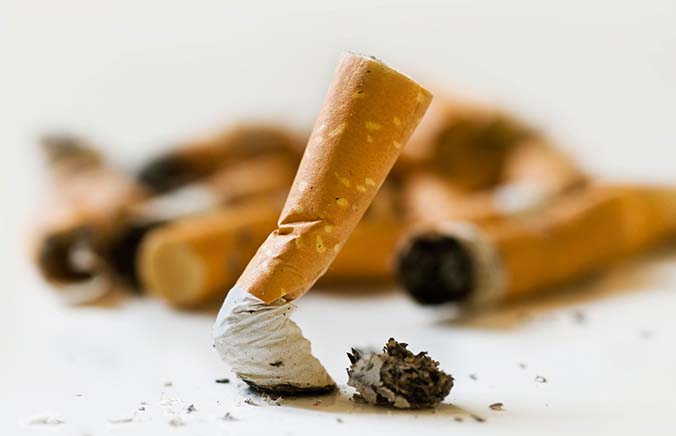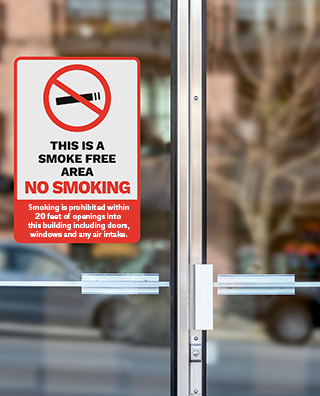Fighting for tobacco control
funding has been a long-term effort
1998: The Master Settlement Agreement
In 1998, the Attorneys General of 46 states signed the Tobacco Master Settlement Agreement (MSA) with four of the largest tobacco companies in the United States: Brown & Williamson, Lorillard, Philip Morris, and R.J. Reynolds.
The purpose of the MSA was to settle lawsuits by states to recover costs associated with the treatment of smoking-related illnesses. Four states – Florida, Minnesota, Texas, and Mississippi – settled their tobacco cases separately from the MSA states. The MSA authorizes additional tobacco product manufacturers to participate in the agreement. As of October 2018, there are more than 50 participating manufacturers who are bound by the terms of the MSA.
As part of the MSA it is estimated participating manufacturers will pay $246 billion over the first 25 years to the settling states, including Nevada. The MSA also imposes restrictions on the advertising, promotion, and marketing or packaging of cigarettes including a ban on targeting youth.
1999: Spending MSA Dollars
In 1999, the Nevada Legislature passed two bills, Assembly Bill 474 and Senate Bill 496, that determined how the tobacco settlement proceeds would be distributed. These bills required approximately 60% of Nevada’s annual MSA payment to go toward health care programs and the remaining 40% to be used for Nevada’s Millennium Scholarship program.
The U.S. Centers for Disease Control and Prevention (CDC) has developed estimates of what it would cost each state to adequately fund a comprehensive tobacco control effort. These estimates make it very clear that each state could run a strong statewide tobacco prevention program with only a fraction of the settlement payments they receive each year from the tobacco companies.
More than two decades after the passage of the 1998 state tobacco settlement, Nevada ranks 47th in the nation in funding programs to stop kids from smoking and help smokers quit, according to a national report.
Nevada currently spends $950,000 per year on tobacco prevention and control programs using the MSA payments it receives, which is just 3% of the $32 million recommended by the CDC.
1998
Tobacco Master Settlement Agreement (MSA) is signed between major tobacco companies and 46 U.S. states and the District of Columbia, including Nevada.
1999
The Fund for a Healthy Nevada (FHN) was created under Nevada Revised Statute 439.620 using a portion of the state’s share of the MSA.
2000
The State of Nevada initiates use of FHN funding for tobacco control. Nevada dedicates approximately $2 million of FHN funds yearly to tobacco control, nearly matching federal funding granted by the CDC to the state at the time.
2003
Nevada increases its state tax on cigarettes from 35 to 80 cents per pack.
2006
The Nevada Clean Indoor Air Act (NCIAA) is passed by a majority of Nevada voters and took effect December 8, 2006. A majority of voters also rejected a competing measure that would have weakened existing smoke-free laws. The passage of the NCIAA provides for major changes to Nevada’s smoking laws to protect children and adults from secondhand smoke in most public places and indoor places of employment. It also allowed local (city/county/town) governments in Nevada to enact smoking laws within their jurisdictions that are even stronger than state law.
2009
The federal tax on cigarettes increases from 39 cents to $1.01 per pack. At the same time, NTPC is successful in preventing a repeal of the NCIAA, Senate Bill 340 is drafted and supported by state and local health authorities identifying Local Lead Agencies (LLA) for tobacco programming and FHN funding beginning July 2010.
2010
Southern Nevada Health District is awarded $14.6 million for tobacco control through the Communities Putting Prevention to Work initiative.
2013
NTPC efforts advocating for restoration of FHN funds dedicated to tobacco control are successful, resulting in reinstatement of FHN funds for tobacco control at half the previous amount, $1 million annually.
2015
Nevada increases its state tax on cigarettes from 80 cents to $1.80 per pack. Nevada also passed a law prohibiting a person from selling, distributing, or offering to sell e-liquid containing nicotine for electronic smoking devices to any child under the age of 18. Youth smoking prevalence in Nevada drops to its lowest recorded level at just 7.5 percent.
2016
Adult smoking prevalence in Nevada drops to its lowest recorded level at just 16.5 percent.
2019
SB 263 passed, requiring that vapor products and alternative nicotine products be taxed and regulated as other tobacco, implemented a 30% tax of wholesale price for vapor products, and established penalties for selling to minors, including internet sales. The NCIAA was also expanded to include e-cigarettes and vape products.
2021
Adult smoking prevalence in Nevada falls to 14.2%, but more than 24% of Nevada high school students report using electronic vapor products.
1999
The Fund for a Healthy Nevada (FHN) was created under Nevada Revised Statute 439.620 using a portion of the state’s share of the MSA.
1998
Tobacco Master Settlement Agreement (MSA) is signed between major tobacco companies and 46 U.S. states and the District of Columbia, including Nevada.
2003
Nevada increases its state tax on cigarettes from 35 to 80 cents per pack.
2000
The State of Nevada initiates use of FHN funding for tobacco control. Nevada dedicates approximately $2 million of FHN funds yearly to tobacco control, nearly matching federal funding granted by the CDC to the state at the time.
2009
The federal tax on cigarettes increases from 39 cents to $1.01 per pack. At the same time, NTPC is successful in preventing a repeal of the NCIAA, Senate Bill 340 is drafted and supported by state and local health authorities identifying Local Lead Agencies (LLA) for tobacco programming and FHN funding beginning July 2010.
2006
The Nevada Clean Indoor Air Act (NCIAA) is passed by a majority of Nevada voters and took effect December 8, 2006. A majority of voters also rejected a competing measure that would have weakened existing smoke-free laws. The passage of the NCIAA provides for major changes to Nevada’s smoking laws to protect children and adults from secondhand smoke in most public places and indoor places of employment. It also allowed local (city/county/town) governments in Nevada to enact smoking laws within their jurisdictions that are even stronger than state law.
2013
NTPC efforts advocating for restoration of FHN funds dedicated to tobacco control are successful, resulting in reinstatement of FHN funds for tobacco control at half the previous amount, $1 million annually.
2010
Southern Nevada Health District is awarded $14.6 million for tobacco control through the Communities Putting Prevention to Work initiative.
2016
Adult smoking prevalence in Nevada drops to its lowest recorded level at just 16.5 percent.
2015
Nevada increases its state tax on cigarettes from 80 cents to $1.80 per pack. Nevada also passed a law prohibiting a person from selling, distributing, or offering to sell e-liquid containing nicotine for electronic smoking devices to any child under the age of 18. Youth smoking prevalence in Nevada drops to its lowest recorded level at just 7.5 percent.
2021
Adult smoking prevalence in Nevada falls to 14.2%, but more than 24% of Nevada high school students report using electronic vapor products.
2019
SB 263 passed, requiring that vapor products and alternative nicotine products be taxed and regulated as other tobacco, implemented a 30% tax of wholesale price for vapor products, and established penalties for selling to minors, including internet sales. The NCIAA was also expanded to include e-cigarettes and vape products.
What will happen if tobacco prevention funding is cut?
Tobacco use is the single most preventable cause of death and disease in our society. If Nevada does not invest in efforts to prevent and control tobacco use, Nevadans will experience not only increased smoking rates but also increased health complications, reduced quality of life, and increased medical costs associated with the chronic diseases that result from tobacco use.
Studies have found that once tobacco prevention funding is eliminated or reduced significantly, smoking rates begin to increase quickly, leading to a reversal of positive tobacco trends. A reduction of tobacco prevention funding could also result in job loss within Nevada’s public health workforce, as it did just a decade ago when funding was eliminated.
The best way for a state to reduce tobacco use and its harms and costs is to establish an adequately funded comprehensive tobacco prevention program that employs a variety of proven approaches, including smoke-free laws and periodic tobacco tax increases. Published studies provide evidence of the effectiveness of comprehensive tobacco control programs and tobacco control policies, in both reducing harms associated with tobacco use and increasing quit rates among smokers.























